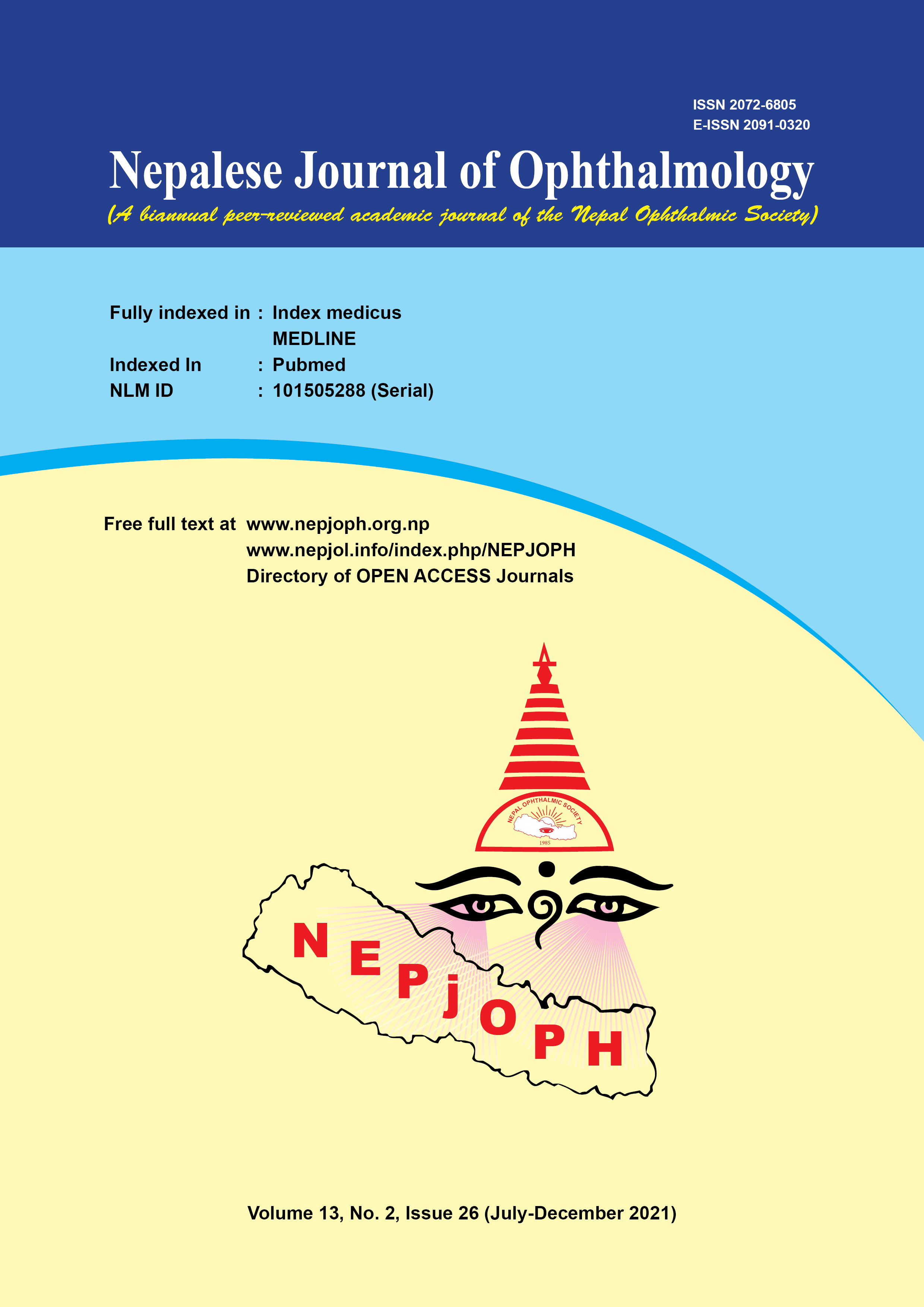Trend of Intravitreal Bevacizumab Dispensing Technique in Nepal
DOI:
https://doi.org/10.3126/nepjoph.v13i2.32408Keywords:
Intravitreal, Endophthalmitis, Questionnaire, BevacizumabAbstract
Introduction: The main purpose of this survey was to find out what technique for bevacizumab injection is practiced by ophthalmologists in Nepal and to evaluate which is the best technique of drug dispensing and what possible hindrances are there in following it.
Materials and methods: This was an online survey using google forms.
Results: There were a total of 34 participants in the survey. Most of the participants (58.8%) followed the same vial, multiple prick, multiple days method for giving intravitreal bevacizumab.. Majority of participants said they thought that aliquoting the drug and using it same day would be the best technique to prevent post injection endophthalmitis. Cost and unsuitability for small hospitals were the main factor preventing surgeons from practicing the best method.
Conclusion: Risk of endophthalmitis can be reduced by following proper drug dispensing techniques. Aliquoting bevacizumab in smaller syringes under aseptic conditions can reduce the risk of endophthalmitis.
Downloads
Downloads
Published
How to Cite
Issue
Section
License
Copyright (c) 2021 Nepalese Journal of Ophthalmology

This work is licensed under a Creative Commons Attribution-NonCommercial-NoDerivatives 4.0 International License.
This license enables reusers to copy and distribute the material in any medium or format in unadapted form only, for noncommercial purposes only, and only so long as attribution is given to the creator.




